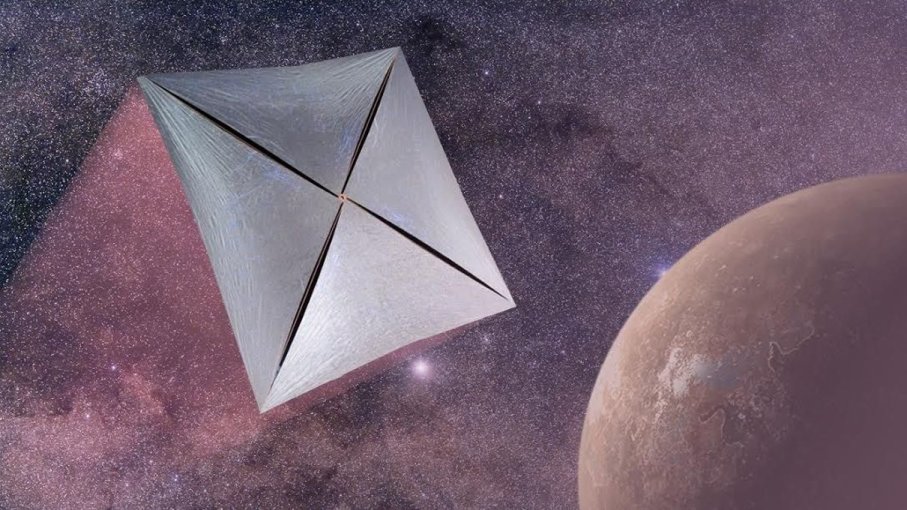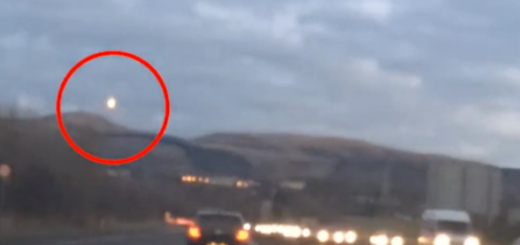Stephen Hawking Plans to Send Tiny Nanocraft to Alpha Centauri

Theoretical physicist and artificial intelligence forewarner Stephen Hawking has a plan to get us to the Alpha Centauri system, the closest star system outside of our own. And by “us” I really mean an unmanned spacecraft. And by “unmanned spacecraft,” I really mean a tiny, laser-propelled electronic device measuring just 3.2 centimeters to a side.
Hawking is one of several people to support the project called Breakthrough Starshot. Others include Facebook founder Mark Zuckerberg and billionaire Yuri Milner. NASA is involved, too. If everything works as planned, the spacecraft could arrive in the Alpha Centauri system a little more than 20 years after it launches.
That might sound like a long time, but Alpha Centauri is 4.37 light-years away, meaning it takes more than four years for light to travel from Alpha Centauri to Earth. Keep in mind that, as far as we know, light is the fastest stuff in the universe. If we tried to travel there using conventional rockets, the trip would last 30,000 years. Twenty years is mind-bendingly fast by comparison.
So how could a spacecraft make such a huge journey in so little time? Part of it has to do with how light and energy-efficient the tiny spacecraft will be. But the fact that we’ll propel the craft with lasers is the primary reason it will be hauling butt out in space.
The spacecraft will use a light sail. Photons, the particles of light, have momentum. When a photon collides with an object such as a light sail, it transfers some of that momentum to the object. This is the tiniest of pushes, but when trillions of photons repeatedly push against a sail, it adds up. The spacecraft will accelerate slowly, but it will continue to accelerate over a long time. Eventually, the spacecraft will travel faster than any conventional rocket could, and it will still be accelerating to a top speed of around 100 million miles an hour (161 million kilometers per hour).
Velocity is just one of the challenges the team faces. Another is that there’s a lot of radiation in space. Radiation can create electric charges in electronics that cause errors, including catastrophic failures. Since this spacecraft is, essentially, an integrated circuit on a light sail, that’s an issue.
Typically, engineers would plot a course to avoid as much radiation as possible, beef up a spacecraft’s radiation shielding and create circuits designed to detect when radiation is present. But this strategy would slow down the spacecraft, making it travel on an indirect route and weighing it down with more shielding. It would add years to the spacecraft’s mission. Since most integrated circuits have a life span of less than 20 years, the spacecraft will already be the electronic equivalent of a senior citizen if it gets to Alpha Centauri with no delays.
The team’s alternative solution to the radiation problem is to design self-healing circuitry. That way, should the spacecraft encounter harmful radiation, it can repair itself and continue on its mission. If radiation causes a charge to build up within the spacecraft, interfering with operations, the craft will apply a voltage to an electronic gate. This heats up the gate and effectively resets everything to a base state. The team refers to the process as annealing, which is a glass and metalworking term. It means to make a substance stronger by heating it to extreme temperatures and allowing it to cool.
Assuming this all works, within a few decades we should get a closer look at the Alpha Centauri system, including the planet Proxima b. You may remember that scientists discovered Proxima b earlier in 2016 —- it’s a planet orbiting the habitable zone of its host star, Proxima Centauri. The Breakthrough Starshot team plans to include technology that will allow the spacecraft to take images of Proxima b and send them back to Earth.
I’m making a prediction right now: By 2051, we will be looking at the first pictures of an alien world in another solar system. That gives us 10 years to perfect the Starshot spacecraft, 20 years for the craft to travel to Proxima Centauri and another four years or so for the information to get back to us. See you then!



 Creators of mankind
Creators of mankind Description of “Tall white aliens”
Description of “Tall white aliens” Where they came from?
Where they came from? About hostile civilizations
About hostile civilizations The war for the Earth
The war for the Earth “Tall white aliens” about eternal life
“Tall white aliens” about eternal life Video: “Nordic aliens”
Video: “Nordic aliens” Aliens
Aliens Alien encounters
Alien encounters The aliens base
The aliens base UFO
UFO Technology UFO
Technology UFO Underground civilization
Underground civilization Ancient alien artifacts
Ancient alien artifacts Military and UFO
Military and UFO Mysteries and hypotheses
Mysteries and hypotheses Scientific facts
Scientific facts


















